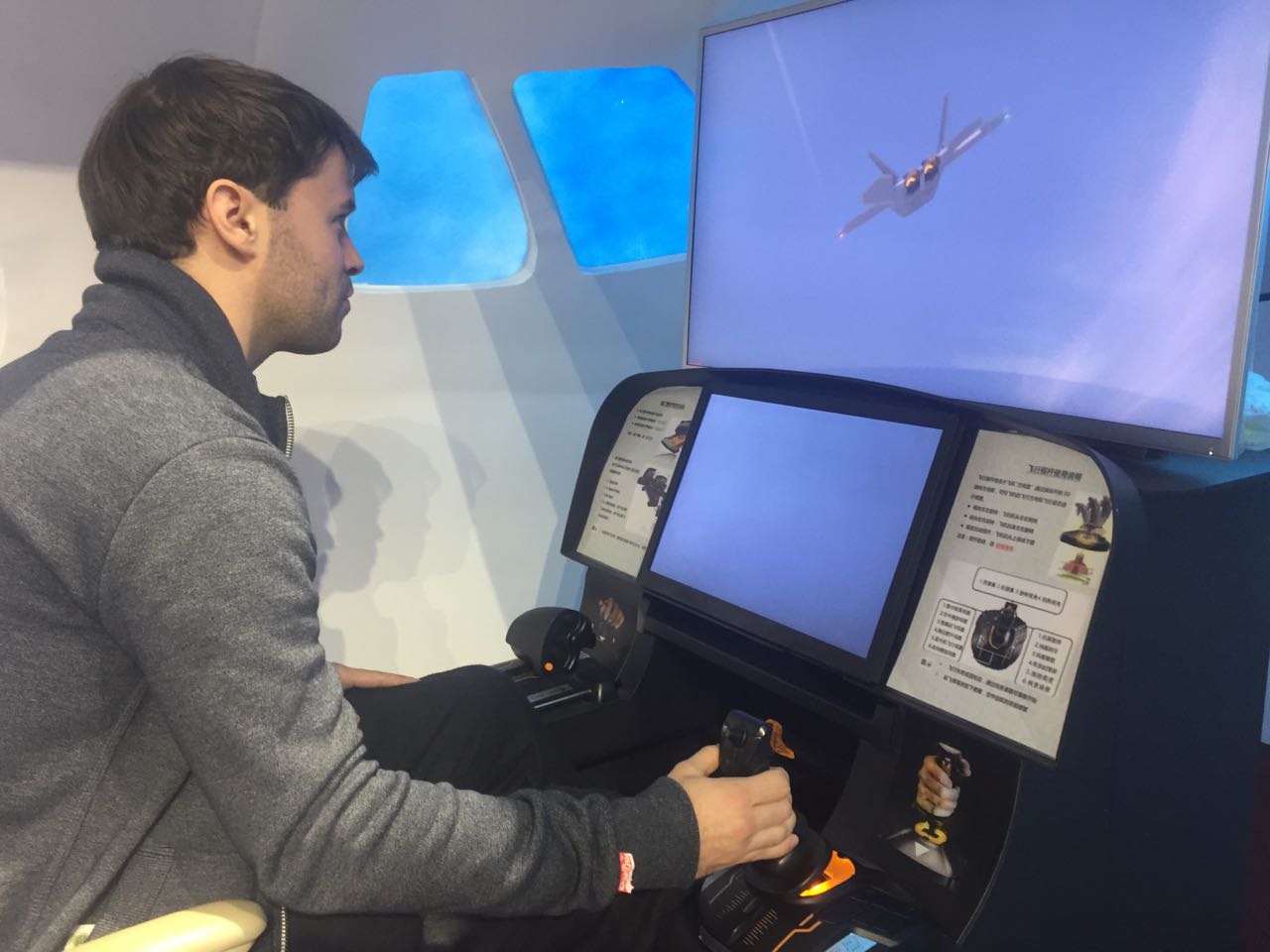
CCTV News:The "Five Years of Forging Forward" exhibition showcasing China’s great achievements in the past five years was held at the Beijing Exhibition Center from September 26 to November 26. The exhibition attracted many visitors and showcased China’s many achievements in the fields of science and technology, medical care, culture and anti-corruption in the past five years.
Walking into the exhibition hall, we can see many successful examples of new rural construction. After the Chinese government has increased infrastructure building and taken various poverty alleviation measures, local people’s living standards have improved and the economy has become prosperous. In addition, through the exhibition, we can also learn about the rapid progress of China’s science and technology field, such as the large fire extinguishing/water rescue AG600 amphibious aircraft, as well as unmanned cars and artificial intelligence robots. China’s self-developed Beidou satellite navigation system (BDS) is impressive, and the demonstration of intelligent health service robots and medical examination systems and 3D printers is also refreshing.
An interactive experience that allows you to experience the power of the Beidou satellite navigation system
Beidou satellite navigation system is one of the most advanced satellite navigation systems in the world. The exhibition area provides interactive experience equipment such as flying emulator and car driving emulator equipped with Beidou satellite navigation system, which allows visitors to experience the clarity and accuracy of Beidou system firsthand. Visitors can also understand the super scale and super functions of Beidou system through the Beidou system model and brief introduction in the exhibition area.
As a mature satellite navigation system, the Beidou system has been widely used. As early as the 2008 Wenchuan earthquake disaster, the Beidou-1 system has played an important role in disaster relief. Affected by the earthquake, local communications, electricity and transportation were almost completely destroyed, and the disaster area was completely lost from the outside world. The Beidou Central Control System and the Beidou Navigation Emergency Team established to deal with the disaster have provided reliable and real-time large amounts of data for rescue operations. In addition, since 2010, the border guards in Yunnan Province have been fully equipped with the Beidou-1 positioning system, which is used to strengthen border patrols and combat border crimes.
According to the plan, by 2020, China will complete the network of 35 Beidou-3 satellites, building a Beidou global system that rivals and surpasses GPS in some indicators, and can provide services to the world. At that time, Beidou will achieve even greater achievements. Of course, it is believed that there will also be rich profits. According to reports, the annual turnover of the Beidou system has reached 31.50 billion US dollars.
"Intelligent Health Service Robot" invites you to take a quick physical examination
Another highlight of the exhibition is the "intelligent health service robot" that is already being used in remote areas of China. Visitors can experience a free quick medical examination on the spot. Visitors simply put their ID card on the robot’s scanner, and it can identify your personal information. Then the person in need of the medical examination stands on a scale, reaches his left arm into a blood pressure meter, and holds another test instrument in his left hand. The robot can quickly analyze some basic indicators to detect whether the person has a problem. The test results can also be transmitted electronically to the designated hospital.
The device was developed and produced by a company in Xianyang, Shaanxi Province, and has been in use for more than a year. It is mainly used in Qinghai and Gansu provinces in northwest China. It is especially suitable for the elderly who live in rural areas and are not very convenient to go to large hospitals for medical examinations. With a large rural population and many still living in areas with inconvenient transportation, this kind of medical examination method that can provide door-to-door service, coupled with reasonable price, can indeed bring convenience to villagers in need, so there should be a very broad market prospect.
3D printing technology is refreshing
Another popular exhibit is a 3D printer. The staff in the exhibition area can print beautifully designed and complex three-dimensional patterns on the spot with slurry made from mashed potatoes. Although the exhibition area demonstrates only the "small tricks" in 3D printing, we can also see the advantages and future trends of 3D printing. China, one of the world’s largest manufacturing countries, has enthusiastically embraced the technology of 3D printing. Sales of 3D printers in China have increased year by year in the past few years, and sales are expected to exceed 20,000 units by 2020.
While the industry is still in its infancy in China, companies across the country are already using 3D printing in innovative ways. In early 2017, Blu-ray Innox in Chengdu, Sichuan, used 3D bioprinting technology to successfully print blood vessels and transplant them into rhesus monkeys. The success of this test is an important breakthrough in 3D printing medicine and the first step in the history of 3D printing of human organs. (Author: Colin Robinson, British, CCTV foreign expert)